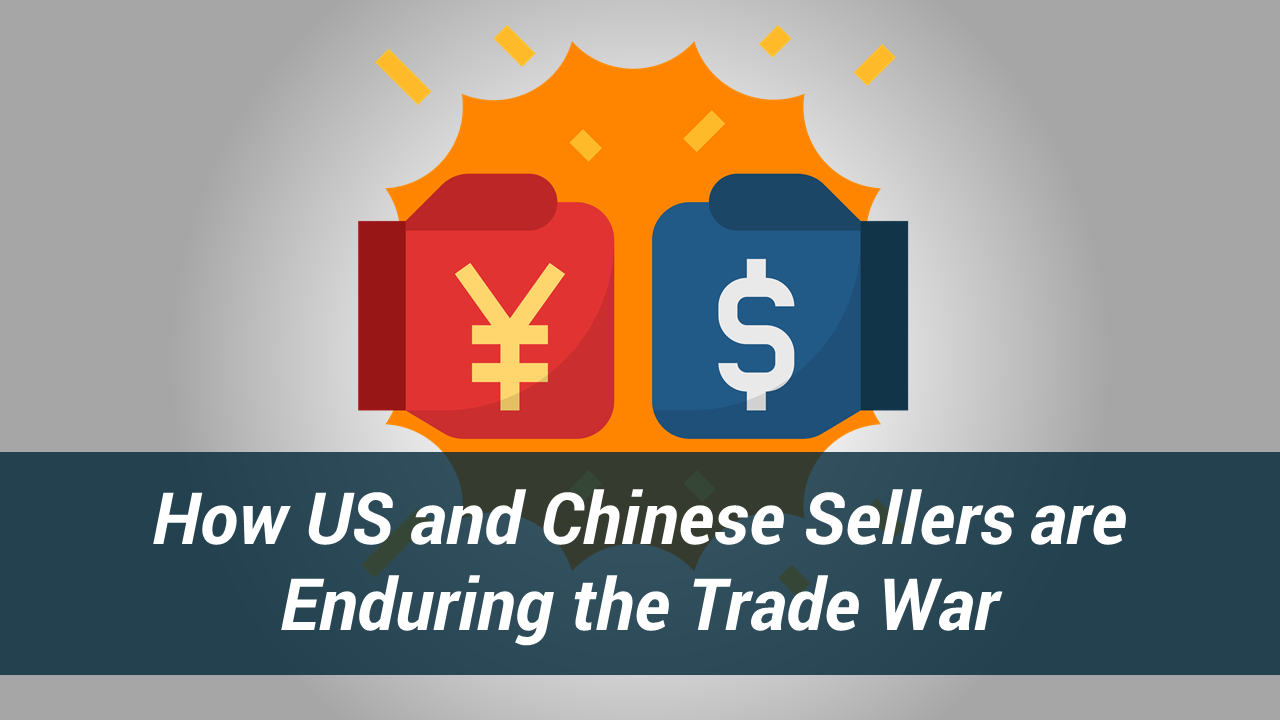Is your business feeling the shock of the trade war yet? If not, it soon could be. This article explores how US and Chinese businesses are feeling the trade war impact, as well as which categories, sectors, and economies are taking the biggest hits – and which brewing tariffs are casting ominous shadows over e-commerce seller’s heads in 2020.
What’s Been the Trade War Impact on American Sellers?
Ever since this battle began in July 2018, merchants have seen the trade war impact through increased tariffs as they have risen from 10% to 25% for a growing list of product categories. For instance, if your products had an existing duty of 8% before the trade wars kicked in, the cost of the increased tariffs and duty could now be costing you a whopping 33%. That’s a tough pill to swallow for any business, small or large. There are also pending plans to impose tariffs specifically on electronics. For Newegg sellers, this is a prime focal category, so let’s look at that next.

- Meat
- Vegetables
- Oil Seeds
- Fabrics
- Plastics & Rubbers
- Other Manufacturing Materials
Importing Finished Electronics from China

If you manufacture in the US using Chinese parts, your business has likely already been affected. Businesses that import finished electronics from China, may have avoided increased tariffs for the time being, but how much longer will this last? Discussions about the next round of tariffs have included product categories that heavily impact Newegg sellers.
- Laptops
- Desktops
- Keyboards
- External Batteries
- Smartphones
- Headphones
- Flash Memory
- Computer Monitors
- Video Game Consoles
Sony already announced that their Playstations may increase in price due to higher import tariffs. Competitors Nintendo and Microsoft quickly followed, as well as many other players in the industry.
American Businesses Affected
Unsurprisingly, businesses based in America are feeling the sting caused by the trade wars. An ever-increasing number are leaving or looking to leave manufacturing or sourcing in China and venture elsewhere due to increasing costs and lower profit margins. In July 2019 alone, more than 50 global enterprises, players such as Apple and Nintendo announced they would leave China. More followed in September, as 40% of all US companies in China reported that they were considering relocation. Those are big multinationals, but what about smaller businesses? According to a survey conducted by Amcham China, 74.9% of all entrepreneurs surveyed said that the increase in tariffs is having a negative impact on their business, especially because of a lower demand for products (52.1%), higher manufacturing costs (42.4%) and higher sales prices (38.2%). Chances are, one of these reflects the situation your business currently finds itself in.
Tariffs Suspended Indefinitely, but for How Long?

Originally planned for August 2019, the increase in tariffs got postponed to December 15th and then postponed indefinitely due to a truce. But hold on, we’re not out of the woods yet! While a truce is relatively positive news, it in no way represents an end to the trade wars. Signs point to China being unable to keep up their part of the deal of purchasing $200 billion in goods from the United States. While some believe the trade agreement already looked somewhat unrealistic, China now has to deal with the COVID-19 outbreak and strong restrictions on its imports and exports. With all these uncertainties looming, we may wind up seeing some version of these tariffs after all.
How Tariffs Are Weakening Business
The New York Times reports that even if a trade deal is reached, the damage of the long-lasting trade war will linger for quite some time. Manufacturing in the US is only 47.2% of what it used to be, and continues to decline.
Will a 25% increase in tarrifs from the US-China Trade War increase your business costs?
Have you considered switching to suppliers outside of China?
Those who answered “Yes” to the above, how do you plan on dealing with higer costs?
Around what percentage of your business inventory or materials are imported from China?
Sourcing and Manufacturing Elsewhere

With the rise in costs, companies are faced with a dilemma: increase their pricing, or take a hit on their efficiency and profitability. Neither is a good option, and increasing prices to maintain margin can drive away customer demand.
Supply Chain monitor, QIMA, already sees an obvious trend of U.S. businesses moving their manufacturing to South East Asia. Requests for audits in China in 2019 fell 14% compared to a year earlier, but increased by 37% for Bangladesh, followed closely by Vietnam. Worldwide requests for audits in China, such as factory inspections, had already been dropping by 3.4% yearly prior to these trade wars.
- 47% of US companies cited an increased cost of manufacturing in their Chinese manufacturing facilities.
- 27% of US businesses have encountered tightened inspections on imported goods
- 23% cited experiencing slower customs clearance for products and components when entering or leaving China
- 51% of Amazon survey respondants have considered sourcing outside of China.
- 19% of these respondants stated that they will look into moving their manufacturing operations to the US.
The Trade War Impact on Chinese Sellers
The interesting flip side of this story that’s often under-reported is the trade war impact on Chinese businesses. Practical Ecommerce suggests that China holds the advantage as they mainly import soybeans, pork, and cotton from the US, while America imports finished goods and critical parts & components. Not being able to import parts, or importing them at a much higher cost, means that American manufacturing suffers as well – thus becoming less competitive. These ripples reach even further as other countries may also put off buying American goods due to their inclusion of these expensive Chinese parts.
Chinese e-commerce sales grew 27.3 percent to $1.94 trillion in 2019, so it doesn’t feel like Chinese domestic e-commerce will be affected much by the trade wars as China hardly imports any finished goods from the US. Also, when considering the affluent Chinese consumer taste for luxury goods, it’s Europe who’s the primary benefactor of splurges, not the US.
China’s export dropped by 12% in 2019 , but global economic growth has generally been dwindling for years. While it is hard to pinpoint exactly what causes the drop in exports, the overall number of industries affected seem less severe when compared to the United States.
Available data suggest that it’s primarily China’s manufacturing industry that’s suffering from the on-going trade wars. Chinese businesses such as restaurants and street vendors catering to manufacturing personnel are having a hard time surviving as fewer and fewer workers show up for meals.
China has several tools at its disposal in order to soften the blow. For instance, lowering the tax rates for affected companies or even depreciating the value of their currency, makes their pricing more attractive for business from other nations. However, it can’t go left unsaid that this last example is a partial reason the trade war started in the first place.

What's Next?

As an e-commerce seller, you may already be experiencing diminishing margins. For the time being, only uncertainty is certain. This is why it has never been more important to have a solid manufacturing and shipping strategy in place.
We welcome you to read our previous blog in this series addressing the history and generalities of the trade war. Our upcoming article will detail successful strategies that e-commerce sellers can adopt to reduce the trade war impact on their business. For sellers looking for a response to costly global shipping and China exporting, Floship may have the innovative solution your business is looking for.


